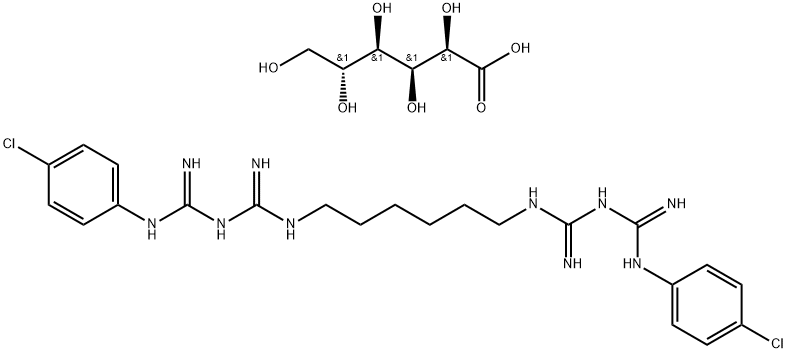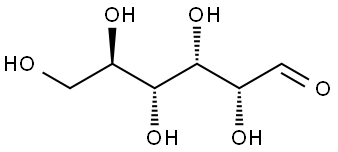Chlorhexidinedigluconate , 20wt.%inH2O , 18472-51-0
Synonym(s):
1,6-Bis(N5-[p-chlorophenyl]-N1-biguanido)hexane; 1,1′-Hexamethylenebis(5-[p-chlorophenyl]biguanide);Chlorhexidine digluconate solution
CAS NO.:18472-51-0
Empirical Formula: C28H42Cl2N10O7
Molecular Weight: 701.61
MDL number: MFCD00083599
EINECS: 242-354-0
| Pack Size | Price | Stock | Quantity |
| 100g | RMB24.80 | In Stock |
|
| 500g | RMB87.20 | In Stock |
|
| 1000g | RMB161.60 | In Stock |
|
| others | Enquire |
PRODUCT Properties
| Density | 1.06 g/mL at 25 °C(lit.) |
| vapor pressure | 0.005Pa at 25℃ |
| storage temp. | 2-8°C |
| solubility | water: soluble50% (w/v) |
| form | Liquid |
| color | Colorless |
| Water Solubility | 750g/L at 20℃ |
| Sensitive | Light Sensitive |
| λmax | 257nm(H2O)(lit.) |
| Merck | 14,2091 |
| InChIKey | YZIYKJHYYHPJIB-UUPCJSQJSA-N |
| SMILES | N(C1C=CC(Cl)=CC=1)C(=N)NC(=N)NCCCCCCNC(=N)NC(=N)NC1C=CC(Cl)=CC=1.[C@@H](O)([C@@H](O)C(=O)O)[C@H](O)[C@H](O)CO |&1:34,36,41,43,r| |
| LogP | -1.81 at 20.7℃ |
| CAS DataBase Reference | 18472-51-0(CAS DataBase Reference) |
| EPA Substance Registry System | Chlorhexidine gluconate (18472-51-0) |
Description and Uses
Chlorhexidine digluconate solution is a bis(biguanide) family cationic broad spectrum antibiotic that is available in a range of concentrations and has been safely used for over 40 years for a variety of health-related applications; but its specific use for umbilical cord care was uniquely tested in three clinical trials in Nepal, Bangladesh, and Pakistan, in the form of 7.1% chlorhexidine digluconate (CHX). Given the promising results of the trials, in 2013 the World Health Organization (WHO) added CHX to its Model List of Essential Medicines for Children; and in 2014 the WHO issued a new guideline on umbilical cord care, which included a formal recommendation on the use of chlorhexidine.
Chlorhexidine digluconate is a broad spectrum antiseptic. Its mechanism of action involves destabilization of the outer bacterial membrane. It is effective on both Gram-positive and Gram-negative bacteria, although it is less effective with some Gram-negative bacteria.It has both bactericidal and bacteriostatic mechanisms of action, the mechanism of action being membrane disruption, not ATPase inactivation as previously thought.It is also useful against fungi and enveloped viruses, though this has not been extensively investigated. Chlorhexidine is harmful in high concentrations, but is used safely in low concentrations in many products, such as mouthwash and contact lens solutions.
Hydrogenolysis of benzyl-nitrogen bonds. Chlorhexidine gluconate is an antimicrobial irrigant that is used as an antiseptic for the skin in the healthcare industry. It is used in hospitals to prevent infection of patients during surgeries and can also be found in mouthrinses.
Safety
| Symbol(GHS) |   GHS05,GHS09 |
| Signal word | Danger |
| Hazard statements | H318-H410 |
| Precautionary statements | P273-P280-P305+P351+P338-P391-P501 |
| Hazard Codes | N |
| Risk Statements | 50/53 |
| Safety Statements | 61 |
| RIDADR | UN 3082 9 / PGIII |
| WGK Germany | - |
| RTECS | DU1950000 |
| TSCA | Yes |
| HazardClass | 9 |
| PackingGroup | III |
| HS Code | 29252900 |
| Toxicity | LD50 in mice (mg/kg): 22 i.v.; 1800 orally (Foulkes) |


